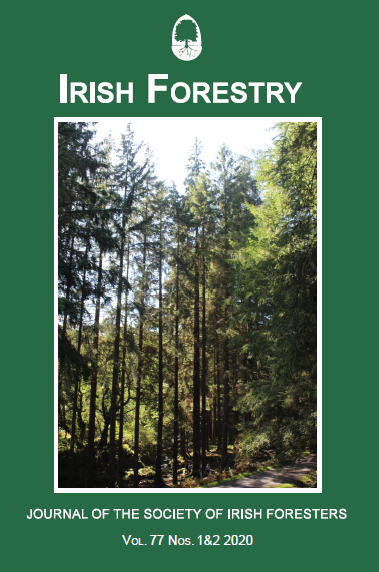Ecosystem services provision from alternative management options was modified to Ireland’s western peatland forests under future development scenarios
Keywords:
forest planning, Remsoft Woodstock, sustainable forest management, climate change, blanket peat
Abstract
A forest decision support system to include impacts of climate change, dynamic assortment prices and Ecosystem Service (ES) indicators and used it to model forest management of a peatland forest landscape in the west of Ireland. Alternative Forest Management Models (aFMMs) were developed for unfertilised blanket bog sites. They focused on low-stocking lodgepole pine, Sitka spruce and birch mixtures, and bog restoration. These aFMMs were implemented in a linear programming-based decision support system that already contained current FMMs (cFMMs). ES provision results when using only cFMMs were compared to those when both cFMMs and aFMMs were used.Using an objective to maximise Net Present Value (NPV), the aFMMs were established on sites with poor to marginal productivity. Their use led to improvements in NPV, biodiversity, water quality, landscape aesthetics and reduced windthrow risk, while harvest volume and carbon storage decreased. Compared to the increased demand for wood, the climate change factors (i.e. accumulated temperature, moisture deficit, detailed method of aspect scoring, and continentality) which affected productivity had relatively little impact on forest management and most ES provision levels. This was partly because the impact of increased temperature, moisture deficits and exposure on species productivity was low. Policy restrictions meant limited opportunity to diversify the forest landscape by planting different species, causing lodgepole pine to become dominant in all scenarios and resulting in similar ES provision trends for all scenarios. However, increased biomass demand and policies to mitigate climate change resulted in intensified management, lower uptake of aFMMs, and, generally, lower ES provision levels.
Published
2020-12-31
How to Cite
Lundholm, A., Corrigan, E., Black, K. and Nieuwenhuis, M. (2020) “Ecosystem services provision from alternative management options was modified to Ireland’s western peatland forests under future development scenarios”, Irish Forestry, 77(1&2), pp. 49-73. Available at: https://journal.societyofirishforesters.ie/index.php/forestry/article/view/10985 (Accessed: 27July2024).
Issue
Section
Articles



